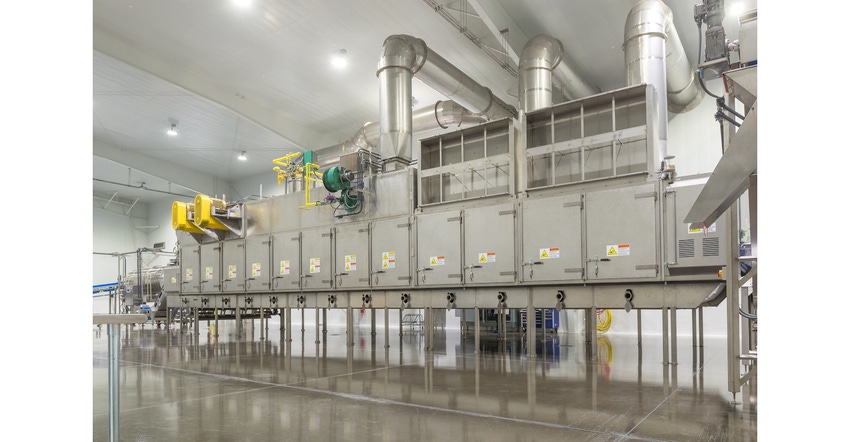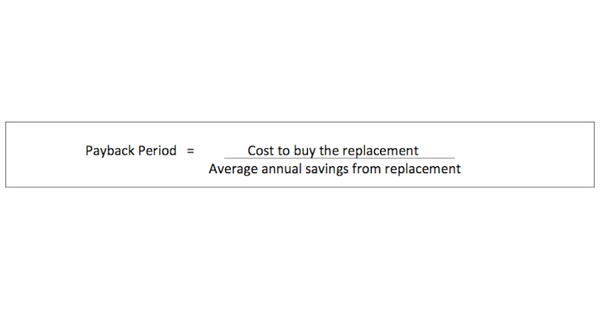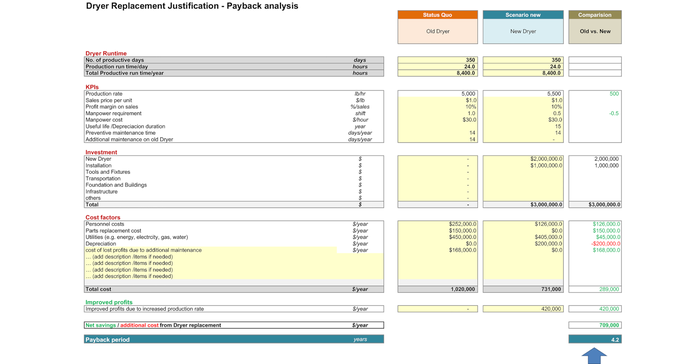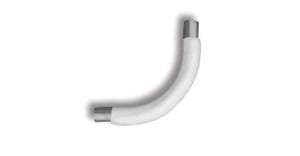A proactive approach, driven by data
November 15, 2021

Michael Whaley, principal process engineer, Buhler Group
The decision to replace major process equipment such as a dryer, is not always an easy one. Rarely is it economical to replace a dryer asset ahead of its expected life--unless it has failed, become too expensive to operate, or there is a need for additional capacity or capability. Still, an aging dryer puts pressure on plant production. When a dryer fails, production can be disrupted, and this can dramatically affect the competitiveness and profitability of a brand and company. In many cases, a modeling replacement evaluation will justify the purchase of a new capital investment.
Consider Unscheduled Maintenance
A process dryer does not age with grace. The greatest factor in unscheduled maintenance and downtime is aging equipment. The aging equipment will require more maintenance in terms of parts replacement (longer downtimes and increased monies required). The aging dryer may also experience more failures that will require unplanned maintenance. Unplanned maintenance can be much more expensive for plants if parts need to be rush delivered and the downtime affects the delivery to customers. The cost of losing customers may be greater than the equipment repairs.
Consider the Cost of Repairs
Extensive repairs can translate into higher maintenance costs, with less and less of a return on the repair investments. If parts are more difficult to get and service to properly repair becomes more difficult to find, a higher cost to maintain the dryer can impact your decision. Documenting asset repair events can help you identify the number and frequency of breakdown events, and the cost of repairs.
Consider Energy Efficiency
Anything that alters airflow and prevents it from passing through the product will greatly increase moisture variation and lower drying efficiencies. In next generation dryers, the principal design feature is the recirculation of a large portion of the air used for drying. Combined with precise control of airflow volume, temperature, and humidity, newer dryer models keep utility costs low and operating efficiency high, with an excellent return on investment and payback period, which can easily justify the cost of a replacement.
Consider Dryer Downtime
Many processors struggle to keep old, high-maintenance equipment running. The cost of purchasing replacement parts for the dryer may be documented, but what about the cost of downtime for cleaning and maintaining the equipment? A dryer producing 10 tons per hour could be producing well over $100,000 worth of product each day. But if you’re spending three hours a week of unplanned maintenance or cleaning downtime, 30 tons of product could be lost each week. This would equate to $650,000 of lost production per year. Next generation, hygienically-designed dryers are engineered for the highest sanitation requirements, making cleaning cycles dramatically shorter, which reduces downtime. With more uptime, an operating dryer can increase profitability.
Consider Plant Safety and Food-Safe Operations
Determine whether or not your dryer poses a health or safety risk, or both. If so, decide whether the benefit to mitigate the risk will exceed the life cycle replacement cost. An older dryer has the potential to cause injury to workers if it malfunctions, and even with consistent maintenance, equipment naturally wears as it ages. Can your dryer continue to contribute to a safe working environment? Does it meet current plant safety standards? For example, can the dryer roof support equipment such as exhaust fans, or people walking on it for inspection? If the design of your legacy dryer results in product accumulation and internal fires, it is probably time to replace. Consider also that a dryer used to manufacture food products must meet modern stringent food safety standards, which older legacy dryers may not be able to do.
Consider Benefits of a Replacement
Can a new dryer that uses energy more efficiently, that can ensure consistent product quality, be better for your bottom line? The answer is yes if it can offer additional capability while improving operations and reducing costs. Next generation dryers are designed for improved sanitation, for more production uptime and increased profits.
Every piece of equipment on a plant floor contributes to the effectiveness of the total plant production process. Therefore, each and every moment the dryer is not working--planned or unplanned, for product changeover or planned maintenance--negatively impacts overall effectiveness. Next generation dryers combined with the digitalization of process control have introduced a new dimension to operational excellence and sustainability, with cloud-based tools that monitor time-based moisture deviation, based on decades of drying expertise. As an example, an inline moisture sensor can take a reading, feed the data up to the cloud where it is analyzed by an algorithm specifically written to control the dryer. That data is then fed back down to the dryer where automated controls can continually adjust the temperature setting as needed to consistently achieve the desired output. Real-time trending reports can take data to the point of analysis, to help plant managers have a better view of the entire production, for better asset utilization.
Making the Case for Dryer Replacement
Substantiate the Need
The circumstances for making a new equipment purchase must be proven in order to justify a new capital investment. For a legacy dryer, modeling replacement evaluations should consider its remaining service life, operating costs, its market value, and future salvage rate. The strongest case can be made when the real costs are quantified and recorded.
Collect Cost Evidence
Compile real costs of remaining with the current equipment. These typically include the cost of parts, cost of labor, cost of energy, cost of fuel, cost of contractors, cost of management, engineering and supervisory time, plus the cost of production losses that could have been revenue. In addition, an invoice from a contractor, an invoice for parts that should not have been necessary to buy, or time sheets for unplanned maintenance work can all prove the true cost of keeping the dryer operating. This hard evidence can be the foundation of your case because it cannot be disputed.
Prepare a Cost Analysis
A cost-benefit analysis can substantiate how investment in a new dryer will result in overall cost savings, and most economic justifications are based on a modeling replacement evaluation that compares old verses new. Design your analysis for keeping the current dryer operating versus replacing it with a new one. For example, if a legacy dryer has increasing maintenance costs, compare the cost of a new dryer to the monthly maintenance cost of the old one, to demonstrate cost savings.
Calculate the average annual savings that would come from a replacement. The average annual savings is the sum of the annual savings for the life of the equipment divided by the years of equipment life.
The payback period for a new dryer, or the time to recoup the cost of the dryer, is part of the analysis. This is the cost of the dryer divided by the net annual savings resulting from operating the dryer, minus annual operating expenses. The payback period for a dryer that cost $3 million and a net savings of $709,000 will be 4.2 years.

Figure 1. The payback is the length of time it takes to recoup the cost of the replacement from the savings it provides.

Figure 2. A dryer justification worksheet shows the payback period for a dryer that cost $3 million and a net savings of $709,000 will be 4.2 years.
In the end, a thorough dryer inspection and cost-benefit analysis can help decision makers justify a dryer replacement that will maximize the profitability of the process line and keep it sustainable. A reliable equipment manufacturer can provide guidance for selecting the best dryer, with the highest quality service and training.
Michael Whaley is principal process engineer, Buhler Group. Contact him at [email protected] to learn more.
You May Also Like


